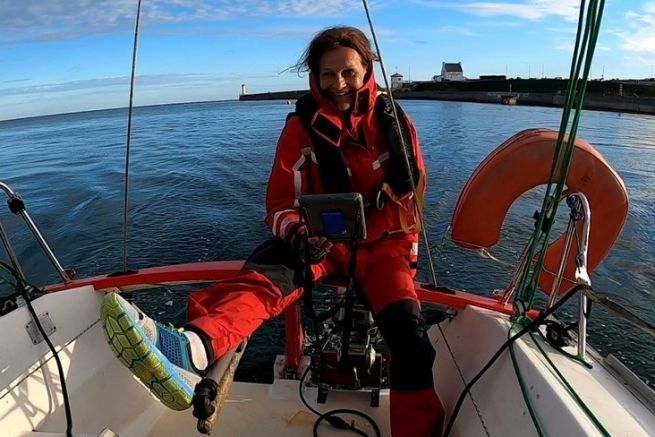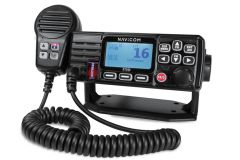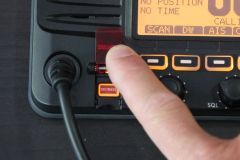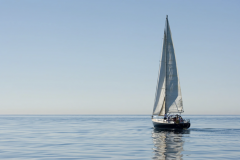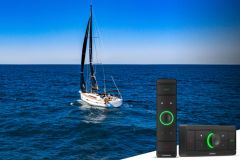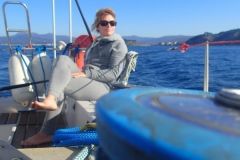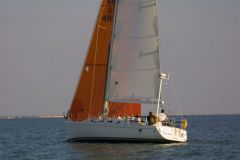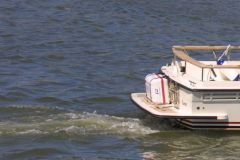It's not always easy to find a crew member at a time when the weather and our schedule irresistibly invite us to set sail. Single-handed sailing then becomes the ultimate solution. For some sailors, it is even a pleasure in itself.
Preparing a sailboat for single-handed sailing requires some thought. The electric pilot is often an essential part of the equipment. However, on small boats without an electrical circuit, its installation can be costly. It will be necessary to add a battery, circuit breakers, cables, an electrical panel, and a means of recharging the battery. If we go out twice a year as a solo sailor, the game is probably not worth the candle.
On the other hand, when such a pilot exists, it is possible, without exaggerated pessimism, that he may break down. Or that an electrical problem prevents us from using it. Shall we call for help?
Training to navigate without a pilot
Maybe not if we practice pilotless sailing. This is possible thanks to an advantage specific to sailing boats: balance under sail. Once the sails are well trimmed, sailboats tend to stay on course without the need to intervene on the helm.
This is especially true upwind through. At downwind speeds, bisafricans and perhaps multihulls fitted with side daggerboards will remain stable for longer. On the other hand, no sailboat will be able to maintain itself for very long on its own with a full tail wind.
A piece to moor the bar
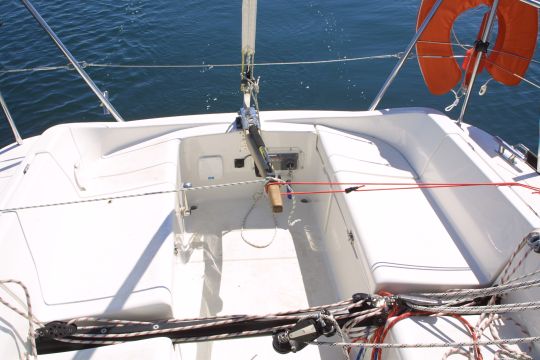
So between upwind and on the beam, on flat seas, you can simply moor the helm to the wind with a single toe. Various systems can then be used to improve this basic installation, if necessary, for example in slightly rough seas, where you will also have to hold the tiller to leeward. The trick is to leave a little play in the helm so that the boat can correct its course by itself. Some people use bungee cords to achieve this effect.
Ladies' time to try it out
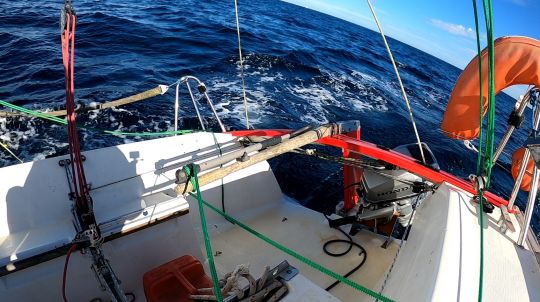
By starting your training in ideal conditions: 8-10 knots of wind upwind on calm seas, you will be able to test the variations in your boat's heading depending on whether you are trimming or tacking one or the other sail. Remember that tucking in the mainsail causes the mainsail to luff and tucking in the jib causes the jib to drop. Start with the mainsail, then try with the genoa.
Once you have found your balance, walk (with a bra) on the deck to gain confidence. If your boat is light, you will also notice an influence of your movements on the course.
This exercise is absolutely brilliant, as it will give you a jump in sail trim. But on top of that it will allow you to sail WITHOUT a pilot!
Performing unmanned maneuvers
Then if you need to change sails or take a reef, you have several possibilities.
The first is to put the boat in a running cape. First make sure there are no immediate obstacles downwind. Then roll up some genoa and tuck it in. In the process, ease the mainsail to avoid a tack. In addition, you will need it to take or let go of your reef. If necessary, block the leeward tiller.
To hoist or lower a genoa, you can also set up the cape, mainsail two-thirds lined and the tiller tied downwind.
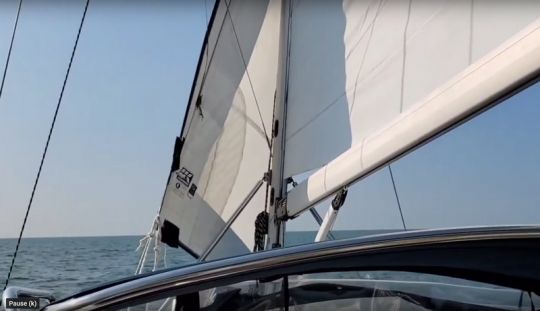
If you're sailing upwind and on the beam, you probably don't even need to cape for these 2 manoeuvres. Set your boat to a steady speed and she should stay there for the entire manoeuvre. Just be careful when lowering a sail forward at full throttle: your boat, once it is deprived of genoa, may have a tendency to drop. Indeed, at full throttle, you may need to tie the helm a little to windward to counteract the boat's tendency to luff. If you then lower the genoa, the boat with less sail will heel less and therefore be less prone to luffing. If the helm is still a little upwind, it will heel.
With a furling genoa you can also allow yourself to sink when you turn. Just let the whole halyard go at once from the cockpit when you're upwind. Then let the boat drift at a steady cape speed under mainsail alone while you moor the genoa in the lines. This manoeuvre is very effective with small sails. A genoa with a large overlap may have a tendency to go overboard. It's up to you to test first in light weather and then in stronger winds to find what is best for you and your boat.
So you will have understood: the cape speed is the second friend of the solo navigator, when he is deprived of a pilot. Even to prepare for your return to port. Set up your mooring lines and fenders quietly, only then roll up the genoa, then readjust your cape under mainsail alone, with the helm moored to leeward. Start the engine, lower the mainsail, furl it and off you go, back to port!

